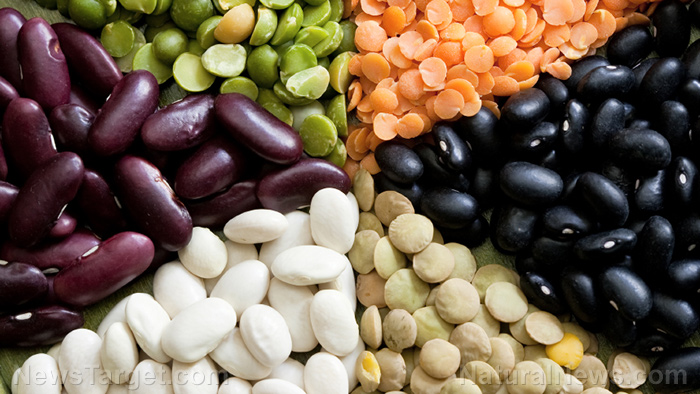
Advertisement
Beans, peas and lentils are usually overlooked as food staples. But in a world where the massive environmental impact of mass meat production is becoming worryingly clear, pulses may provide a solution.
Pulses are a part of plant-based diets. But pulses only really gained recognition when the United Nations (UN) designated 2016 as the International Year of Pulses in the hopes of increasing public awareness of the health benefits of pulses and their contribution to sustainable food production.
In 2019, the UN also designated Feb. 10 as World Pulses Day, further increasing the visibility of pulses around the world.
Even so, these distinctions don’t fully capture the immense potential that pulses hold as nutritious staples and sustainable food sources.
Healthy to eat, healthy to grow
For starters, pulses are nutrient powerhouses. You can get protein, fiber, complex carbohydrates and a wide range of vitamins and minerals from pulses. Some pulses even contain heart-healthy fatty acids.
With such an amazing nutrient profile, it’s no wonder pulses like chickpeas and black beans are touted as viable meat alternatives. In fact, pulses are featured heavily in plant-based diets because they can be used as meat alternatives by vegans and vegetarians.
Eating plant-based foods is linked to better overall health and a lower risk of diseases. In contrast, eating too much red meat has been linked to the development of various diseases, such as cardiovascular disease, diabetes and cancer.
Here’s another good thing about pulses: When you opt for them, your body isn’t the only one that benefits. The world also benefits from it.
A report on the impact of food systems on biodiversity loss revealed that around 30 percent of human-made emissions can be traced to global eating habits. The report also noted the impact of food production on Nature.
For instance, the production of meat and animal products alone harms the environment. According to a study published in the journal Science, getting just a kilogram (kg) of beef to your kitchen produces 60 kg of carbon dioxide. Multiply 130 pounds of carbon dioxide by a couple of billions to match today’s global population and you have a full-blown environmental crisis on your hands.
And with the global population set to exceed 10 billion over the next 30 years, the demand for food will continue to rise, further threatening the environment.
In contrast, growing one kg of pulses and bringing them to your kitchen emits only 0.9 kg of carbon dioxide. Additionally, farmers use far fewer resources when growing pulses than when they raise livestock for meat and animal products. Plus, pulses provide a far greater protein yield per square kilometer than a flock of hens or a herd of cattle and pigs.
Certainly, there’s no denying the advantages of pulses over meat when it comes to nutrition and sustainability.
Cooking with pulses
Versatile and highly nutritious, pulses can be used in practically all kinds of dishes and in any cuisine. Here’s a recipe for a vegan shepherd’s pie that’s packed with protein. It may just be your new Meatless Monday go-to!
Ingredients for 12 servings:
- 16 ounces baby portobello mushrooms, washed and quartered
- 1 1/2 pounds potatoes, peeled and cut into chunks
- 1 pound cauliflower, cut into florets
- 3 medium carrots, peeled and diced
- 2 cloves of garlic, minced
- 1 medium onion, diced
- 2 3/4 cups vegetable broth, divided
- 1 cup uncooked green lentils, rinsed and drained
- 1 cup frozen peas
- 1/4 cup vegan red wine
- 2 tablespoons tomato paste
- 2 tablespoons balsamic vinegar
- 5 teaspoons extra-virgin olive oil, divided
- 2 teaspoons fresh thyme
- 1 teaspoon finely chopped fresh rosemary
- Ground black pepper, to taste
- Kosher salt, to taste
Preparation:
- To a large saucepan, add potato chunks and cauliflower florets. Pour in enough water to cover them. Add 2 teaspoons of salt. Bring to a boil over high heat. Reduce heat and simmer for 10 minutes.
- Drain and discard the water. Return potatoes and cauliflower to the pan. Cook over low heat for 1 minute or until most of the moisture from the vegetables has evaporated.
- Transfer potatoes and cauliflower to a blender. Blend on low speed until mashed, then add 1/4 cup of the broth. Blend on medium speed until smooth. Season to taste with salt and pepper. Set aside.
- Preheat the oven to 400 F. To a food processor, add mushrooms. Pulse until the pieces are roughly as big as oats.
- Heat 3 teaspoons of the oil in a large skillet over medium-high heat. Add the mushrooms and cook for 10 minutes. Transfer to a large bowl and set aside.
- To the same skillet, add the remaining oil. Add onions and carrots and cook for 5 minutes. Add the garlic and cook for another minute. Transfer the vegetables to the bowl with the mushrooms.
- To the same skillet, add the remaining broth, wine, tomato paste and balsamic vinegar. Bring to a boil.
- Reduce heat to medium-low and add lentils, rosemary and thyme. Simmer for 10 minutes.
- Add peas and cook for 10 more minutes or until the lentils are al dente and the liquid is reduced.
- Turn off the heat and combine the mushroom mixture with the lentils. Pour this mixture into a 13×9 dish and spread it evenly over the bottom. Spread the mashed potato mixture evenly over the surface.
- Bake for 20–25 minutes or until the mashed potato topping has slightly browned. Serve warm.
When you swap meat for pulses, you aren’t just doing your body a favor — you’re helping the planet, too! So add more pulses like beans and lentils to your diet by incorporating them into your go-to recipes.
Sources:
Advertisements







